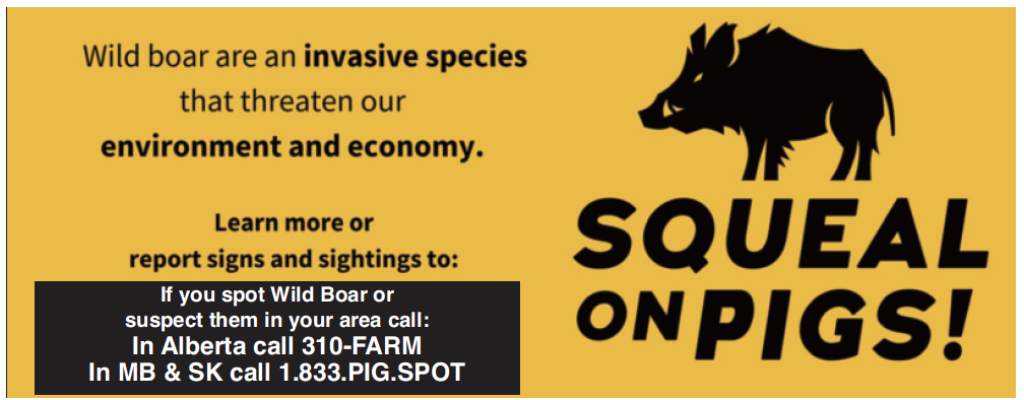
The coordinator of Squeal on Pigs Manitoba, Dr. Wayne Lees, said that as scientists learn more about the behaviours and feeding patterns of feral Eurasian wild boars in Manitoba, strategies for their capture and eradication evolve.Squeal on Pigs Manitoba coordinates Manitoba’s efforts in collaboration with groups throughout North America to eradicate wild pigs from the landscape.Dr. Lees said much of the information on Eurasian wild boars originated in the United States. Still, data collected during eradication efforts over two years in Manitoba provides new insights, and Manitoba is developing its sense of managing the problem.He noted that wild pig sightings have been handled individually until now, but as more data is collected, they’re gaining a better understanding of these pigs’ locations and behaviours. This includes re-evaluating assumptions about their habits, such as feeding patterns and reproductive capacities, while they live in the wild. These insights are shaping more strategic approaches to managing the wild pig population and addressing their impact on the landscape.“We must apply some science to this. Instead of just receiving reports of pigs and then going out to try eliminating them, we should understand their behaviour, movements, breeding practices, etc., to use that information to control the population better.”The study aims to analyze their movements, breeding practices, and environmental impact. These wild boars, initially imported as part of a farming venture in the ‘80s and ‘90s, have since escaped and pose a significant risk due to their destructive nature and potential to spread diseases like African Swine Fever.Dr. Lees further explained the distinction between escaped domestic pigs and Eurasian wild boar. Escaped domestic pigs, such as pot-bellied pigs or outdoor farm pigs, are typically isolated incidents, with small populations that may not be breeding in the wild. It’s important to differentiate between these two groups. “Management strategies for domestic pigs would differ from those applied to the more destructive, disease-carrying Eurasian wild boar populations thriving in the wild.”People are developing new initiatives to address the wild pig situation. One significant effort is using public sightings to locate wild pigs, which aids in drone surveillance and setting up trail cameras or traps. However, sightings are scarce in less populated areas. To tackle this, researchers are working on a new technique to analyze water samples from streams for wild pig DNA. This project, conducted with Assiniboine College and BDX Laboratories, aims to validate the test and enhance wild pig detection in remote areas.Over two years of removal efforts, the group has gathered valuable data, including the number of wild pigs captured, their age, and sex distribution. This research reveals insights into Canada’s Eurasian wild boar population, which appears to be significantly different from the U.S. Canadian wild pigs, which are fewer and harder to locate than their U.S. counterparts. “The ongoing work will enhance our understanding of wild pig behaviour population dynamics and improve management strategies specific to the Canadian context,” said Dr. Lees. Western Canada has far fewer numbers than the U.S., and due to colder weather and a limited food supply, they don’t tend to breed as prolifically as in the U.S.Dr. Lees emphasizes that to address the wild boar problem, it’s crucial to understand the current behaviour of these invasive species. Older data, while interesting, no longer provides accurate insight into the pigs’ movements, breeding habits, and population levels. By focusing on their behaviour now, researchers have a real opportunity to eradicate the Eurasian wild boar population. Interested parties can visit squealonpigsmb.org or call 1-833-SPOT-PIG to report sightings or stay informed about new findings and updates. •
— By Harry Siemens






